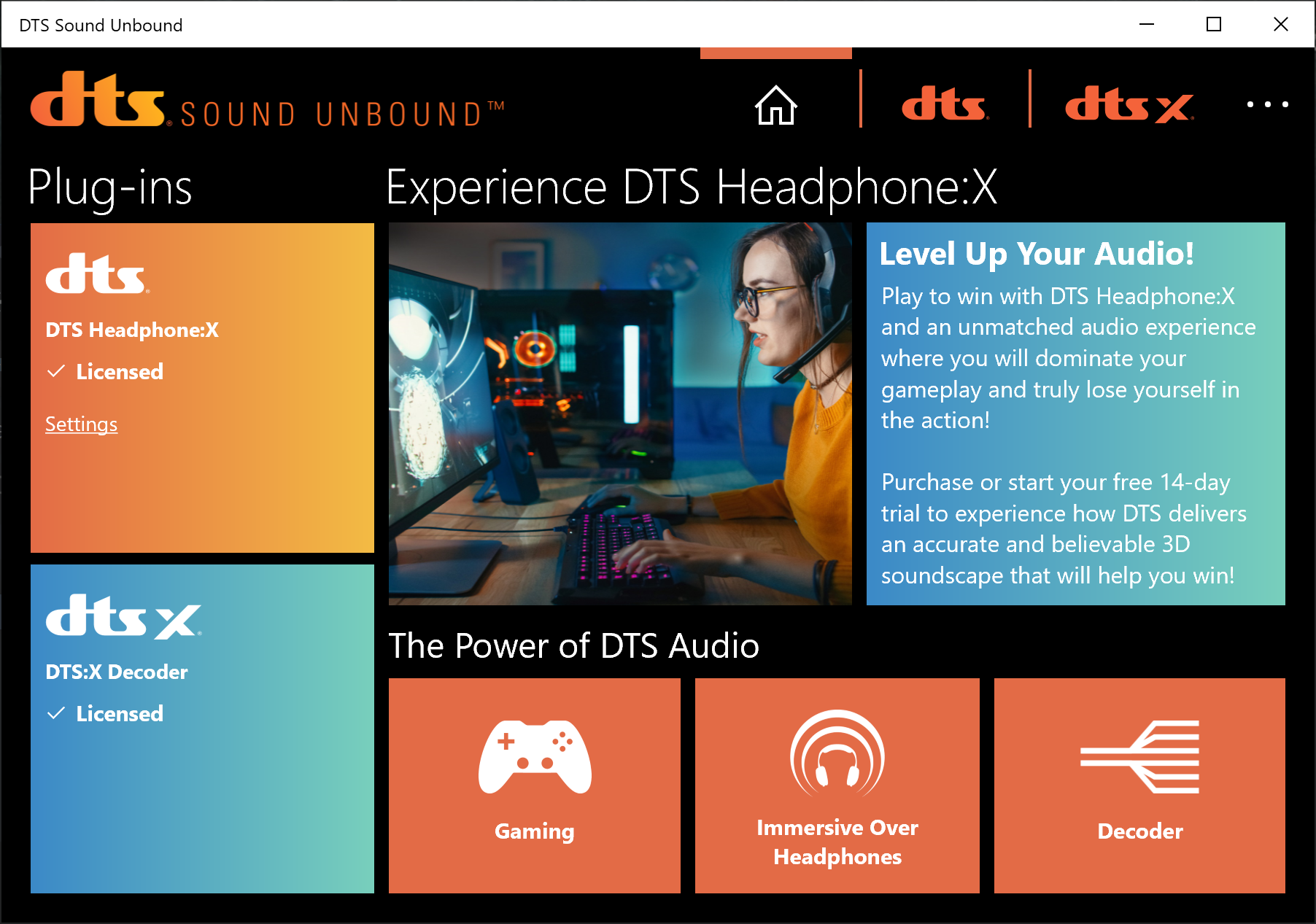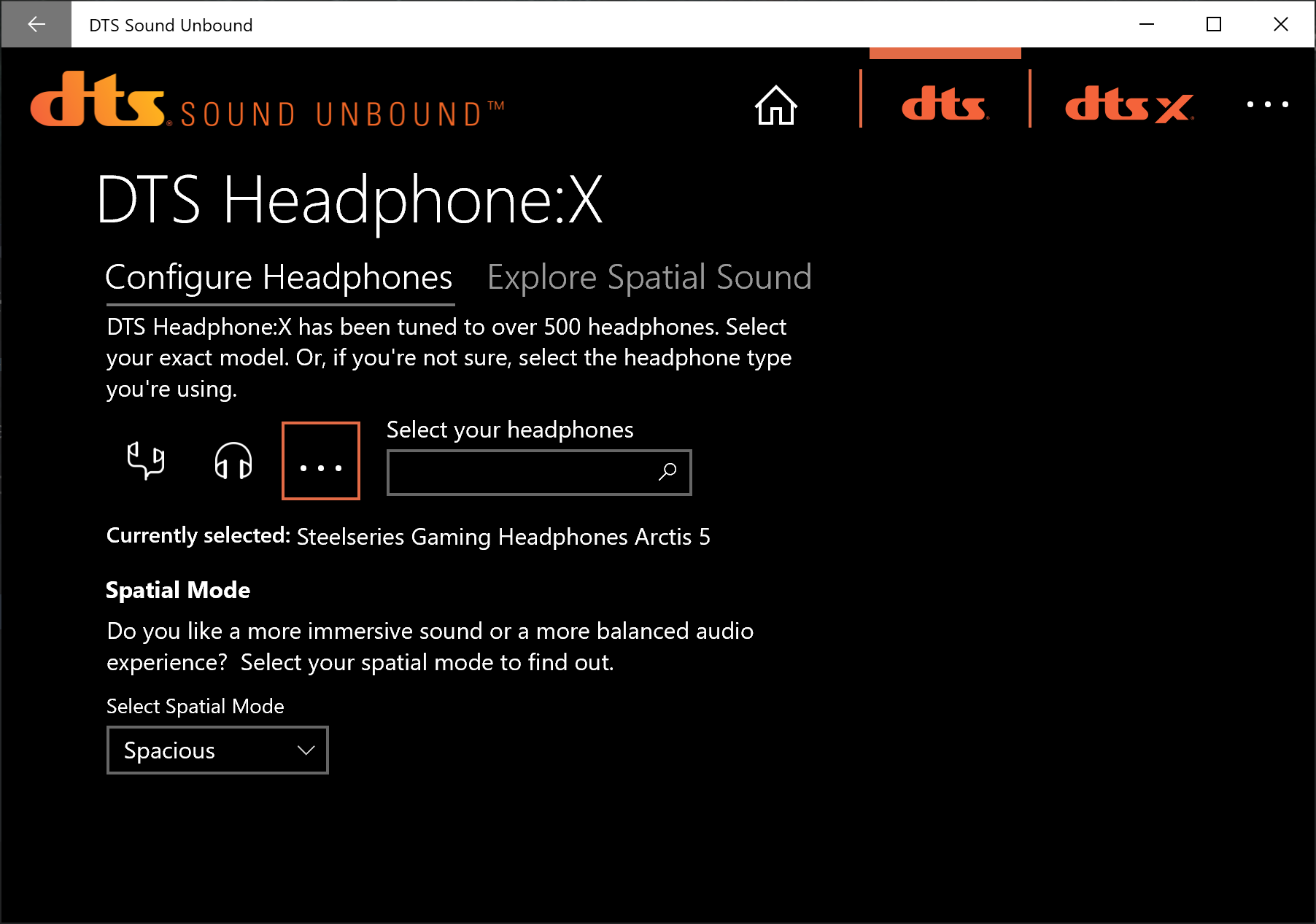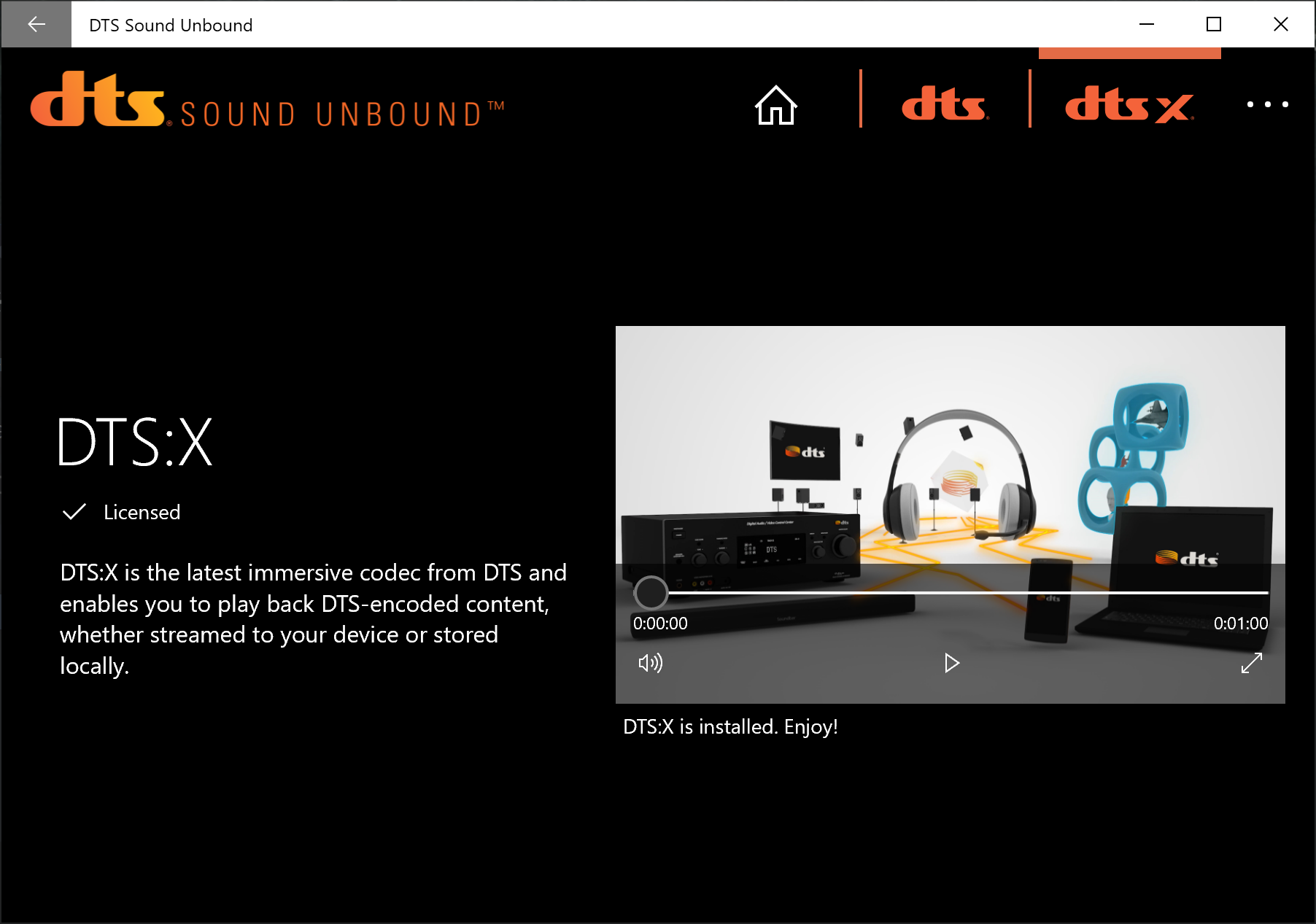A more customized spatial audio choice for Windows 10 and Xbox One
 Screenshot taken by the author.
Screenshot taken by the author.
DTS has been a big name in the surround sound world almost as long as Dolby, but they?ve always had more of a focus on modernized technology and bells and whistles compared to their elder counterpart. They were the first company to ship movie soundtracks on separate optical discs for higher quality audio. Where Dolby has essentially only released two headphone surround virtualization systems over the years with Dolby Headphone and Dolby Atmos, DTS has pushed constant updates to their gaming technology, and made aggressive inroads to get their mixing environment into the hands of the people actually making games.
Now, their DTS Sound Unbound app is finally available on both the PC and the Xbox One after a months-long delay bringing it to the console platform. The app allows you to to trial and unlock two technologies for gaming: DTS Headphone: X 2.0, and DTS:X decoding. Unlocking both costs $19.99. The former is a 3D surround system that turns your headphones into a simulated studio listening environment, with sound that sweeps all around your position in 3D space. The latter is a software decoder primarily for movie soundtracks, but which will also hopefully be used directly in games in the future.
 The tiny list of 13-or-so Atmos games are also fully compatible with this new DTS software, in addition to any PC game with a surround sound mix. Screenshot taken by the author.
The tiny list of 13-or-so Atmos games are also fully compatible with this new DTS software, in addition to any PC game with a surround sound mix. Screenshot taken by the author.
This new version of DTS Headphone will properly render the 3D audio tracks in the same small handful of Xbox/PC titles that also support Windows Sonic or Dolby Atmos. Of course, Sonic is free and Atmos?s full unlock is five dollars less than DTS, so what do you get for that five extra dollars? A different approach to audio, and access to over 500 different profiles based on measuring real headphones in a lab.
DTS Headphone has always sounded more ?Speaker-like? to my ears than its competitors, and that?s no accident. Its default virtualization profile was crafted by taking precise measurements inside DTS?s reference mixing room, which they then mimic over headphones as best as possible by using binaural audio processing tricks. This approach of trying to copy a real speaker-filled mixing room gives DTS Headphone a large sense of space and an increased and more visceral bass response that comes as close to feeling like a real subwoofer as you can get over headphones.
 Screenshot taken by the author.
Screenshot taken by the author.
My favorite feature of this new software is its simple, pain-free customization options. You can choose from two default room profiles: Balanced, or Spacious. Balanced is a match for the DTS reference room, and Spacious pushes the ?Walls? out several feet, lending your sound a more dramatic effect. DTS went one further and their technicians are also constantly measuring headphone models to add to the built-in profile database. If you find your personal pair on the list, be sure to select it, as they?ve hand-tweaked the surround response to work best with that pair of headphones. This is an extra level of EQ precision that I?m delighted they?re taking the time to create, and although many popular headphones are missing from the list, it?s growing all the time. This approach is also far easier than requiring users to do the calibration work themselves.
Game performance with DTS Headphone: X and a full spatial audio game from the tiny list above is more energetic and fun than either Windows Sonic or Dolby Atmos. I played several hours of Borderlands 3 on PC with the software active and the vertical cues as rockets flew over my head were easily noticeable. I quickly came to prefer the more ?obvious? sound of the Spacious room profile.
Xbox users will benefit most when using DTS Headphone with one of the games on the officially supported list, and on PC you can also take advantage with any games that spit out a surround audio mix. This issue has long persisted on Xbox, where the spatial audio platform is only guaranteed to kick in with games on the supported list, and I?m hoping the extra CPU overhead of the next gen consoles will improve things.
An important note: if you own a PC gaming headset that has a dongle featuring DTS Headphone: X 2.0 like the Logitech G Pro X or the Steelseries Arctis Pro series, you can use the DTS Sound Unbound software in place of your dongle?s decoding without paying the license fee. The software will auto-detect these headset dongles and set its profile settings accordingly. You will still need to pay the fee to use it with any other devices you own after the trial, but I thought this was a great touch. No longer will G Pro X users have to put up with the terrible surround implementation that Logitech coded; DTS has your back.
 Screenshot taken by the author.
Screenshot taken by the author.
DTS is my favorite of the currently-available spatial audio solutions on Windows 10 and Xbox. Yes, it surpasses my beloved Windows Sonic in spite of that being free and more widely supported as a result. I love the ability to choose from different rooms in the DTS software, and that they?re measuring and tweaking their sound for individual models of headphones, and that their ?room-based? model gives the bass an extra punch and the surround effects an extra bit of excitement.
I didn?t talk about the extra audio decoder much because I don?t have that many Blu-ray discs anymore and I mostly stream film content these days, but if you want to decode DTS:X content on your Xbox without a dedicated receiver and listen to it on your headphones, this is a much cheaper way to do that.
The Windows 10 spatial audio experience is pretty good right now, and it?s easy to try out DTS for yourself and see if you like it. On Xbox, it?s a little more janky, both in terms of support and interface. The Xbox requires diving into several layers of menu to switch formats, and outside of the official supported list, there?s no guarantee you?re going to hear anything other than stereo. The console also lacks the small helper text near the volume icon telling you that spatial audio is in fact working that Windows 10 has?again, probably because you?d be disappointed in how few titles are actually supported.
With Sony and Microsoft both pushing their 3D audio tech for the looming next generation, I can?t wait for the day where these headphone audio systems are as easy to use and robust on consoles as they are on PC. The DTS app on Xbox with its many profiles is an early peek at that, but until the surround system works in every single game without issue, it?s too hard to get excited. If you?re a PC gamer and you haven?t yet spent the money on Atmos or Razer?s new THX software, DTS is more than worth a look.


